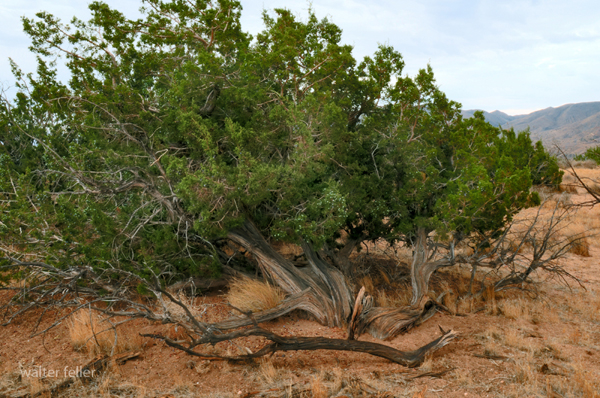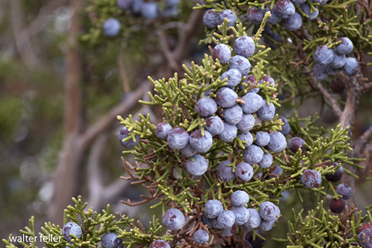California Juniper

Juniperus californica, or California Juniper, native tree or shrub Native Juniper grows well in dry desert-like conditions. In California it grows throughout much of California from Shasta County south to Baja California and in western Nevada and Arizona bordering California.
Distribution and Habitat
This rugged tree tends to form stands among Ponderosa pines, firs and desert shrubs. Chaparral, sagebrush, and pinyon-juniper woodland communities are found; common on mild winters and hot dry summers on rocky and sandy soils. Look for the California junipers on the desert slopes, in particular around the Joshua Tree National Park area, and as scattered groves throughout southern California.Ecological Importance
California junipers are keystone species in their ecosystems, providing food and shelter for many forms of wildlife that include deer, elk, and numerous birds such as Scott's oriole and the ruby-crowned kinglet. Berries become a crucial part of the diet for many animals, which, in turn, also play a role in seed dispersal when the berries are eaten and dispersed through droppings.Growth and Appearance
California junipers are slow-growing, with a narrow height range of 3 to 15 feet, though some stand as tall as 40 feet. The twisted, multistemmed growth and stiff branches make them well adapted to the rough landscape. Leaves are small and scalelike, and fruits are reddish-brown berries containing one or two seeds.Human Uses
The Native Americans traditionally valued California juniper for its wood to manufacture sinew-backed bows and manufactured sweet-tasting cakes from the berries. Today, the wood is occasionally used for fence posts and fuelwood, but the slow growth and irregular shape of the tree limit its application commercially .Adaptation and Growth
The junipers of California are adapted to very poor conditions. They prefer open, sunny areas with well-drained soils but can get by with so little water that they grow quite slowly. They have a very long growing season, but due to water limitation, heights increase only about 2 to 4 inches annually.Fire Ecology
Most fire-prone areas are not ideal places for a California juniper to survive, since they are not well adapted to handle fires. Without fire, they grow and, over time, replace themselves through older tree mortality. On grasslands, California juniper may struggle to keep the dominant position throughout periods with frequent fires.Overall, the California juniper is a hardy, slow-growing species with important functions of food and shelter in its ecosystem, while being a significant cultural and practical resource for humans.

